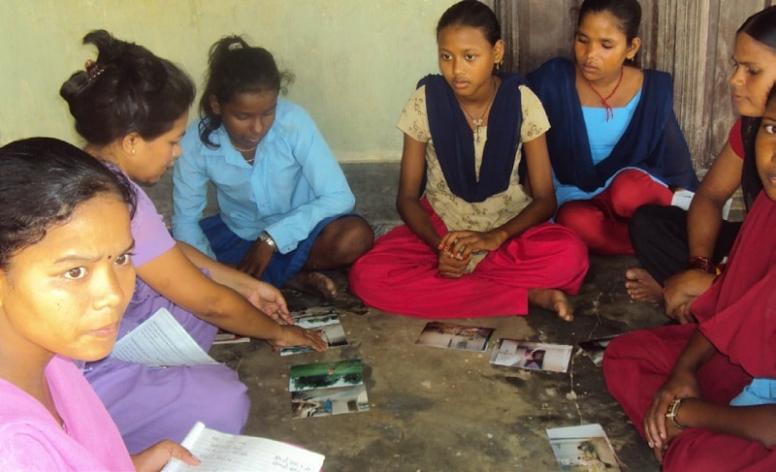In this guide
Hide menu4. Case study
Show sections4. Case study

Changing gender norms by working with young adolescents: CHOICES in Nepal
The CHOICES programme worked with boys and girls aged 10–14 in Nepal to challenge prevailing gender norms through a short, participatory series of life-skills sessions at existing children’s clubs. These were facilitated by children’s club graduates using the CHOICES curriculum developed by Save the Children and evaluated by the Institute of Reproductive Health (IRH) at Georgetown University. The sessions covered issues such as gender inequalities and power, the constraining impacts of gender norms on boys and girls, practical actions that challenge gender norms, and how to realise aspirations. The evaluation used participatory techniques (such as the Photovoice approach, which uses photography to promote social change) and questionnaires, and generated both statistically robust quantitative data and insights from qualitative data.
CHOICES led to statistically significant shifts towards more egalitarian attitudes on gender issues among participants. These included views on boys’ and girls’ right to study, aspirations for their futures and views on child marriage and domestic divisions of labour. Qualitative evidence also shows greater sharing of household chores.
Building on the success of this programme, Save the Children has developed two complementary curricula: Voices and Promises. Voices is aimed at parents of young adolescents, and comprises six short videos and facilitated discussions to change norms around domestic divisions of labour, education, child marriage and equal treatment of boys and girls within the household.
Promises aims to shift community norms related to gender and child marriage. It consists of six posters that are unveiled sequentially in public places. Community activists lead discussion about these posters and bring them to the attention of others in their social networks. An evaluation found that almost 70% of parents had watched the videos and that almost 60% had seen one of the gender equality posters, but less than one-third had participated in any public events. An evaluation of the Promises approach in Nepal found that it had increased community-level understanding of the importance of being physically mature before marriage. Respondents also felt it had contributed to improved relationships between parents and children.
The impact of implementing the entire set of individual, family and community interventions was evaluated in rural Nepal. Two communities received the individual-level CHOICES intervention as well the family and community Voices and Promises interventions. Two comparison communities received only CHOICES. Samples of 1,200 young people aged 10–14 and 600 parents were interviewed at baseline before implementation and at endline one year later.
In both study samples, most measures of gender norms, attitudes and behaviours became more gender equitable, suggesting the positive effect of the individual-level intervention. The increase in gender-equitable norms, attitudes and behaviours reported by young adolescents was generally greater in the communities that received Voices and Promises as compared to the CHOICES-only areas, suggesting an added benefit from the family and community interventions.
Parent-reported quantitative measures did not demonstrate any change through Voices or Promises. In interviews, however, parents mentioned what they had learned, and also how their children’s participation in CHOICES had started to change their views on issues such as the desirable age of marriage, girls’ education and domestic divisions of labour. While overall findings are encouraging, uneven results, particularly among parents, may reflect implementation challenges, including the 2015 earthquakes and subsequent political unrest.
Sources: IRH (2011), Save the Children and IRH (2017), Save the Children (2015). Also see article by Lundgren (2018).